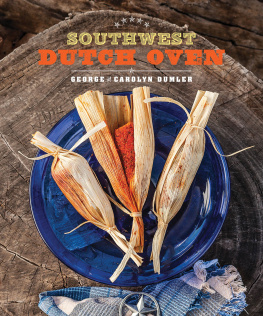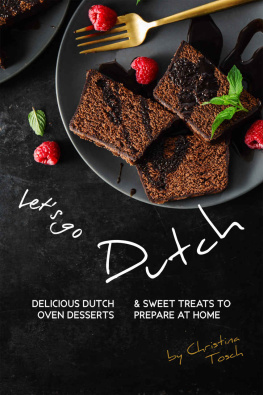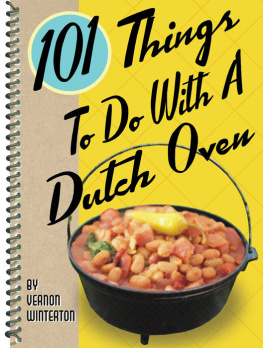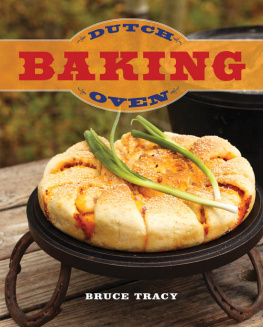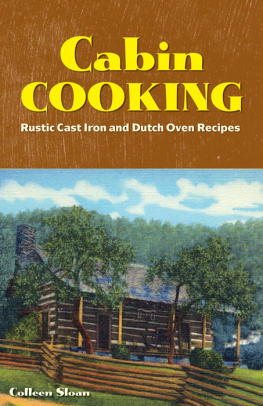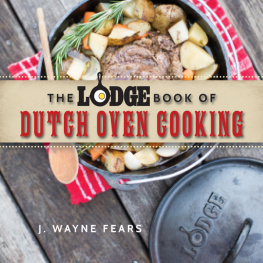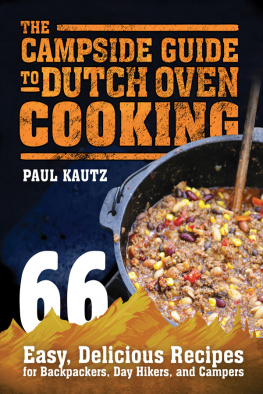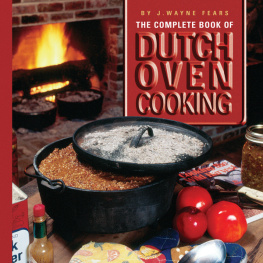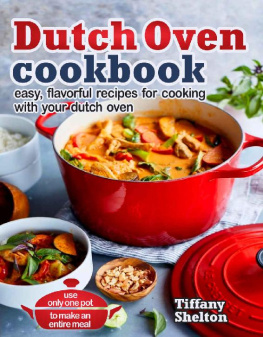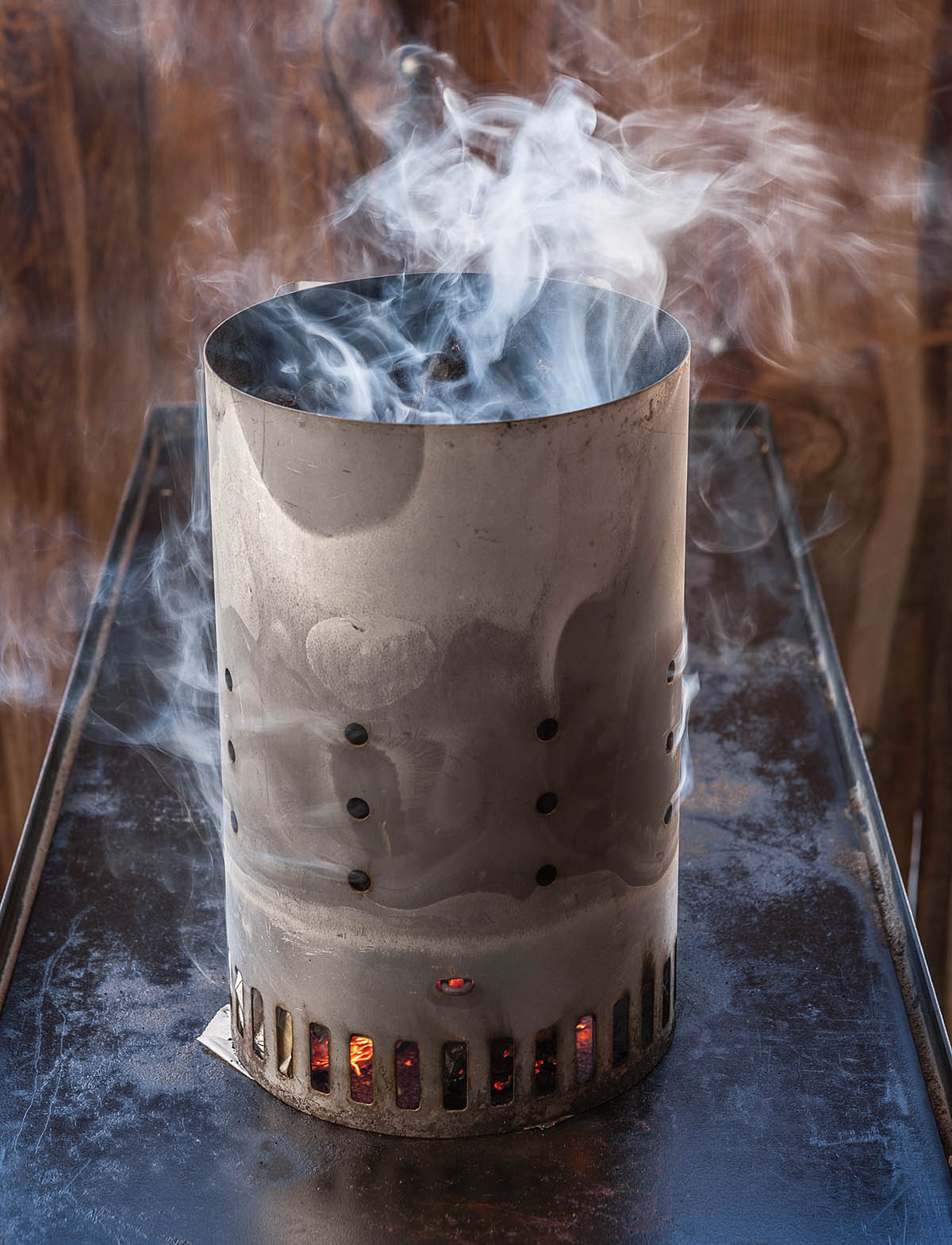Southwest Dutch Oven
George and Carolyn Dumler
Photographs by Steven Meckler

Southwest Dutch Oven
Digital Edition 1.0
Text 2014 George and Carolyn Dumler
Photographs 2014 Steven Meckler
Recipes previously published in the 2011 World Championship Cook-Off Dutch Oven Recipes cookbook are: Sun-Dried Tomato Pasta, Potato-Green Chile Gratin, Chicken Cacciatore Southwest, and Southwestern Vegetable Pinwheels
Recipes previously published in the 2012 World Championship Cook-Off Dutch Oven Recipes cookbook are: Creamed Corn Medley, Southwestern Stuffed Beef Tenderloin, Duck Breasts with Habaero-Raspberry Sauce, Arizona Sun-Dried Tomato Braid, Sonoran Forest Cake, and Pecan Pumpkin Cake
Recipes previously published in the 2013 World Championship Cook-Off Dutch Oven Recipes cookbook are: Corn Avocado Salsa, Creamy Corn Sauce, Orange Cherry Salsa, Three Sisters Gratin, Spice-Rubbed Pork Tenderloin, and Chipotle Cheese Bread
All rights reserved. No part of this book may be reproduced by any means whatsoever without written permission from the publisher, except brief portions quoted for purpose of review.
Gibbs Smith
P.O. Box 667
Layton, Utah 84041
Orders: 1.800.835.4993
www.gibbs-smith.com
ISBN: 978-1-4236-3636-6
To Georges inspirationGary Wilkins, the man he first watched cooking at the Bowie cook-off and became his Dutch oven groupie.
To Carolyns inspirationher mom who let her help bake bread, pies, cookies, and cakes from an early age.
To Mark and Barb Wilkins, Don and Sally Eymann, Dave and Zana Wood, and David Grover and Jamie Boyle for their wonderful mentoring, great advice, and friendly camaraderie during cook-offs.
To all our Dutch oven friends and competitors who have helped us along the way and inspired us to create new, interesting, and tasty dishes.
Tips on Dutch Oven Cooking
People may think Dutch ovens went by the wayside with the ending of the great cattle drives of the 1800s... but Dutch oven cooking is alive and well in the twenty-first century!
In the 1800s, having a Dutch oven was like having a microwave todayevery kitchen had one. However, Dutch ovens are much more versatile than the microwave; perhaps that is why they have endured. A Dutch oven can be used inside, outside, on the ground, on the stove, in the oven, and over a campfire (which is not necessarily recommended). We even saw an Eskimo cooking caribou in a Dutch oven on the beach outside Nome, Alaska.
Dutch ovens are not just for cowboys, prospectors, and mountain men anymore. All sorts of folks use Dutch ovens. There is nothing that could be cooked on the stove or in the oven at home that cant be duplicated in a Dutch oven. We challenge any Food Network star to find something we cant cook in the Dutch oven. After baking a three-layer birthday cake in the Dutch oven that would rival any cake from a fancy bakery, someone challenged us to make a cheese souffl in the Dutch oven. We really messed it up on the first few tries, but we now have it figured outso look for that recipe in a future volume.
Purchasing a Dutch Oven
When you purchase a Dutch oven, pay attention to these tips from us, based on things we did wrong. For example, we didnt know the difference between seasoned and unseasoned Dutch ovens. The ones we had were old ovens inherited from Georges mother and grandmother, and they had been seasoned through 50 years of hard use. We bought a new 10-inch oven that wasnt seasoned, and when we took it out of the box, we noticed that it wasnt black and shiny like the 12-inch oven we had bought a few weeks earlier. It just so happened that Lodge had step-by-step procedures on how to season your Dutch oven in the box. We followed the steps but had to wait a few days before we could cook in our new oven. We learned our lessonalways look at the box to see if the oven youre buying is seasoned or not.
Next, make sure you know the difference between a Dutch oven and a camp oven. A real Dutch oven is flat on the bottom and can easily be used on your stove or in the oven, as well as outside over coals. A camp oven is specifically designed to be used outside with charcoal. The camp oven has three legs, which allow you to place coals under the oven. The lid of the camp oven has a higher lip, which allows you to place coals on the lid without spilling them. However, it is also possible to use your camp oven indoors and in your ovenyou just need to be careful of the legs.
Another thing to think about is the size of your Dutch oven. The sizes we use most frequently are 10-inch and 12-inch ovens, but we have ovens that range in size from 3 1/2 inches in diameter to 16 inches. There are even larger ovensthe biggest weve seen anyone cook with were 22-inch ovens, in a chuck wagon competition. Recipes in Dutch oven cookbooks should specify the size of the oven needed, and you will soon be able to eyeball other recipes and decide what size oven to use.
You can get by with just a few ovens, but you may find you need several of some sizes that are used most frequently. For example, we use a separate 10-inch oven for each layer of a layered cake, as you would if you were using regular cake pans. It is easier than trying to cook it in one oven, when it takes longer to bake and there is greater likelihood of burning the bottom. Also baking each layer separately means you dont have to try cutting the cake into even layerswhich we often messed up in our early days!
Another consideration is between shallow and deep Dutch ovens. For many recipes, a shallow oven is fine, but there are times when a deep oven is required. For example, when baking bread, you will want a deep oven to allow room for your loaf to rise. We often need a deep oven for main dishes, such as roasts and turkeys.
There are a number of specialty ovens that come in handy. One of our favorites is a large oval oven, available from Cabelas. It holds more than a round oven and is perfect for braided bread, biscuits, and larger roasts. You can find cast iron skillets, pie pans, and bread pans. Dutch ovens are even available in lightweight aluminum, which comes in handy for backpackers, hikers, and boaters.
One last cautionbe careful of buying cheap foreign-made Dutch ovens. These may contain lead, mercury, or other impurities that you dont want in your food. We like to look for vintage Dutch ovens at yard sales or antique stores, but we are careful to check out the manufacturer (if it isnt Lodge or Camp Chef) to be sure it will be safe for cooking food.
Tools to Aid in Dutch Oven Cooking
There are a number of tools available for cooking with Dutch ovens. Here are some of the tools we find indispensable:
Chimney used to get your coals started.
Lid Lifter used to lift the lid from the oven when hot. There are several different kinds, but we prefer the type that locks onto the lid by squeezing, which minimizes the chances of spilling coals into the food.
Tongs you will need two different sets of tongs, one to move charcoal and one for food.
Lid Stands besides holding hot lids, these can be used for inverting your oven and baking on the top of the lid (like a pizza). They can be used to hold flat-bottomed Dutch ovens to insert coals underneath. They are also used to hold the lid when displaying food on the lid.
Gloves you will need heavy gloves or potholders for protection from hot cast iron. You can use welding gloves or leather gloves, and both Lodge and Camp Chef make heavy-duty leather gloves and aprons.

